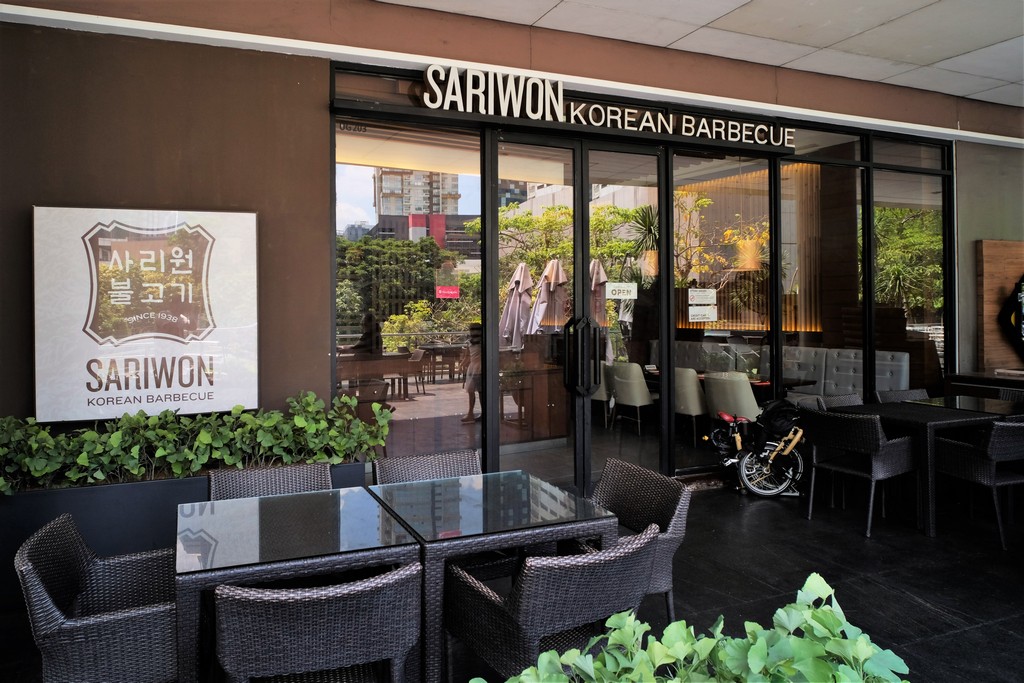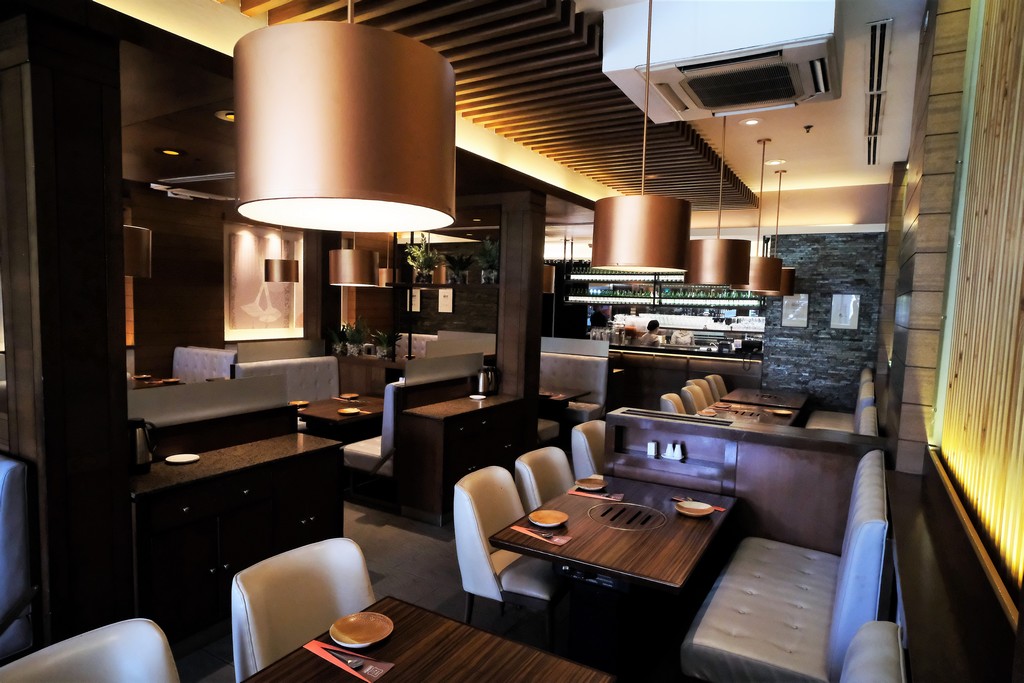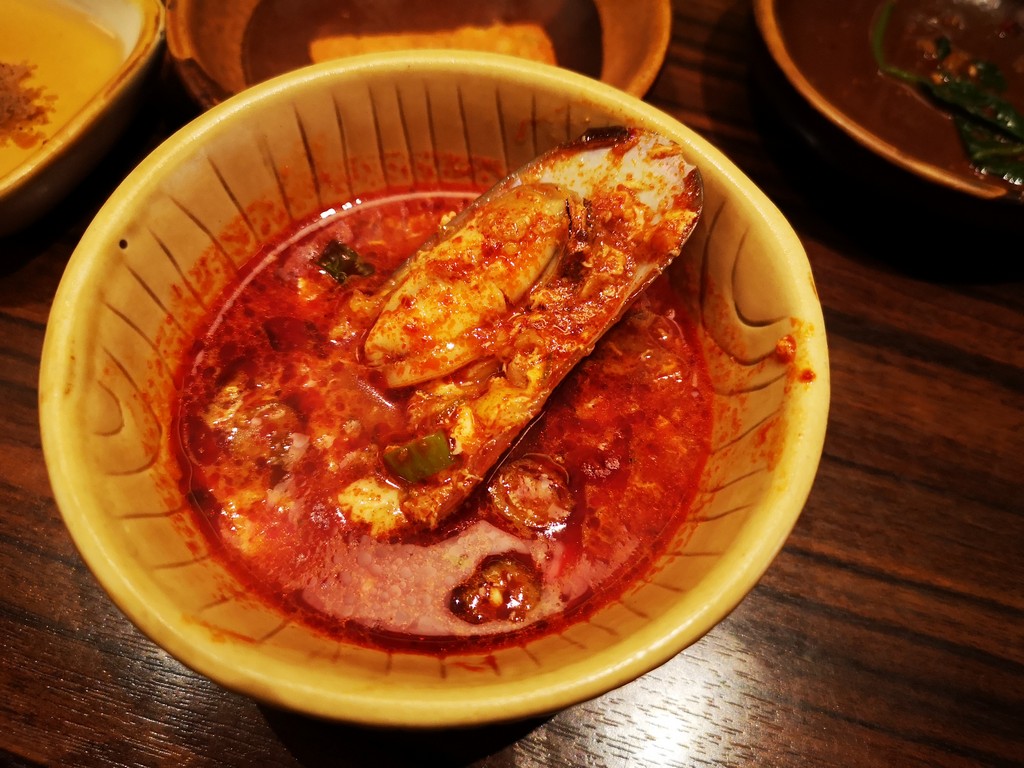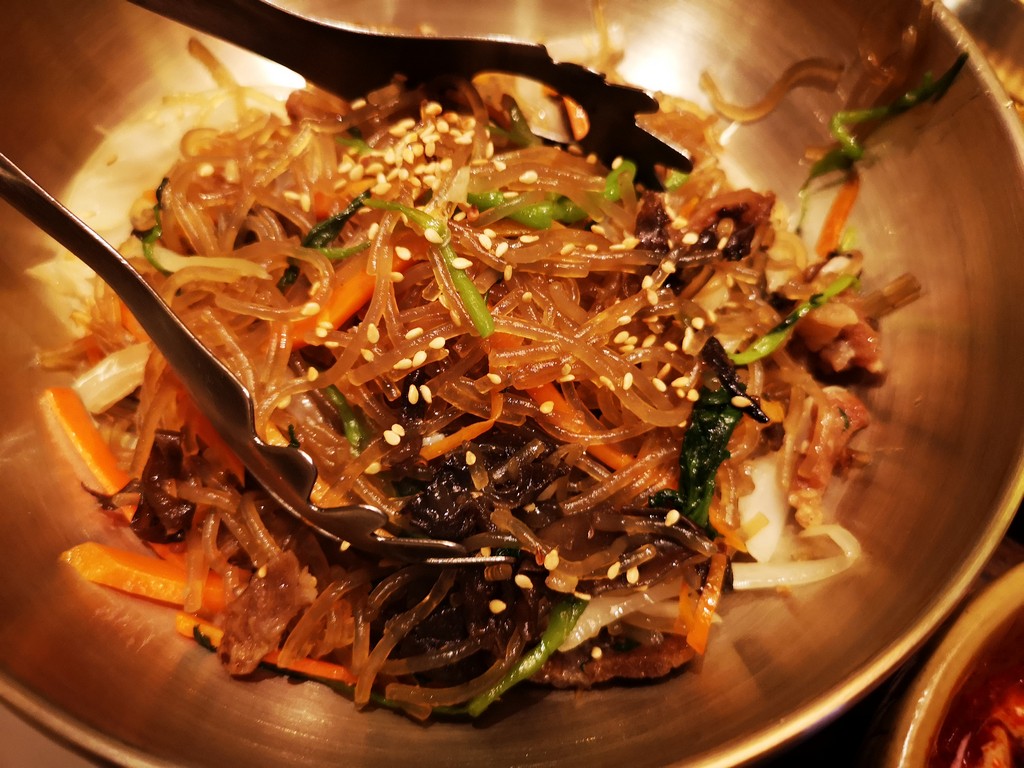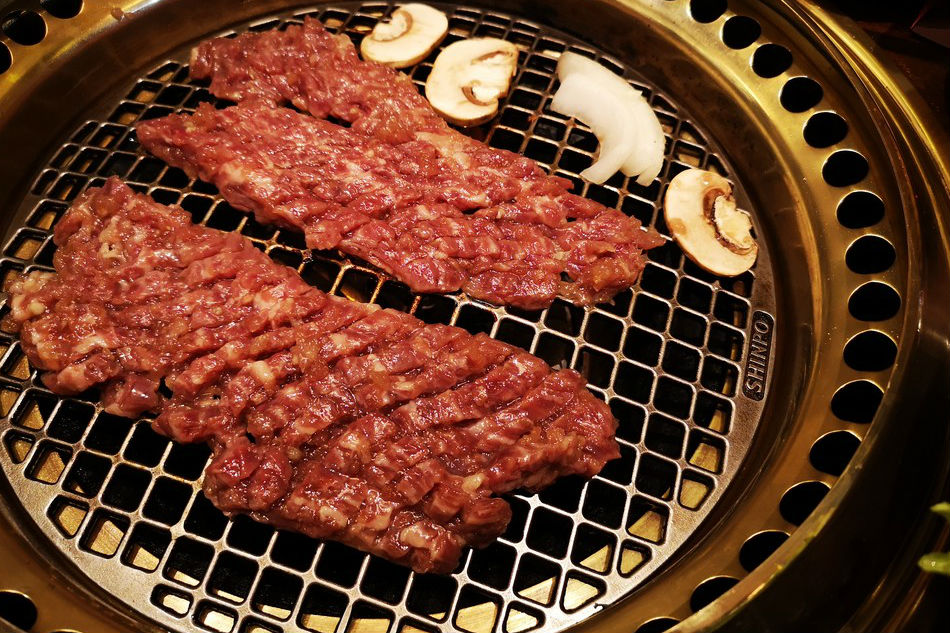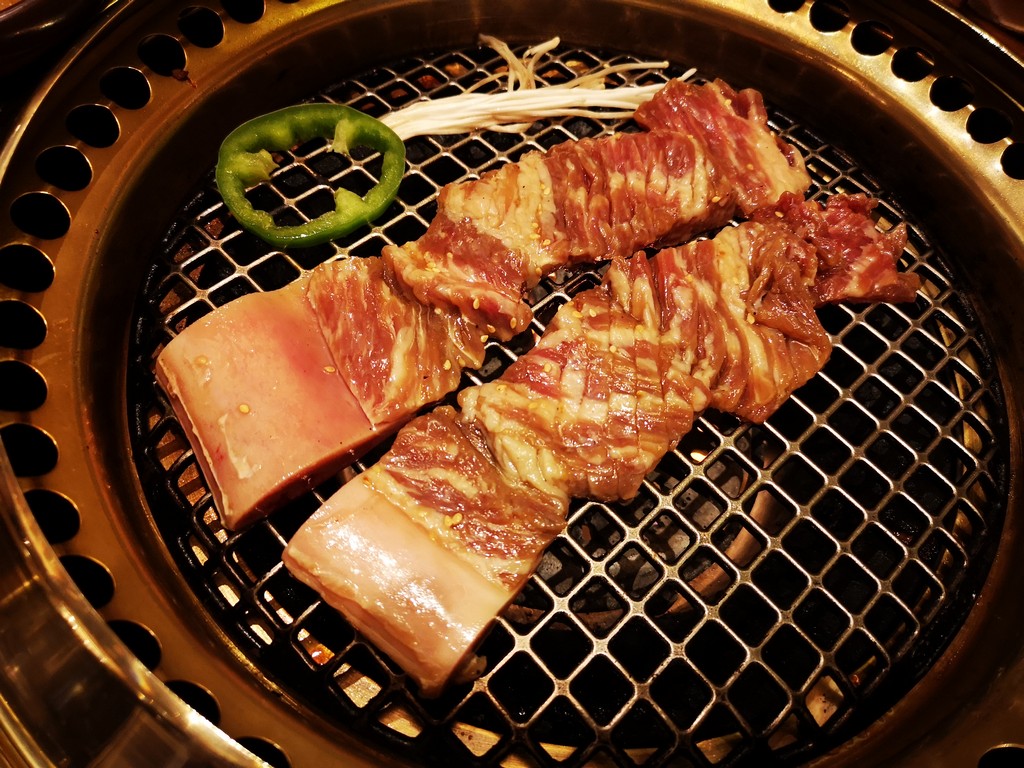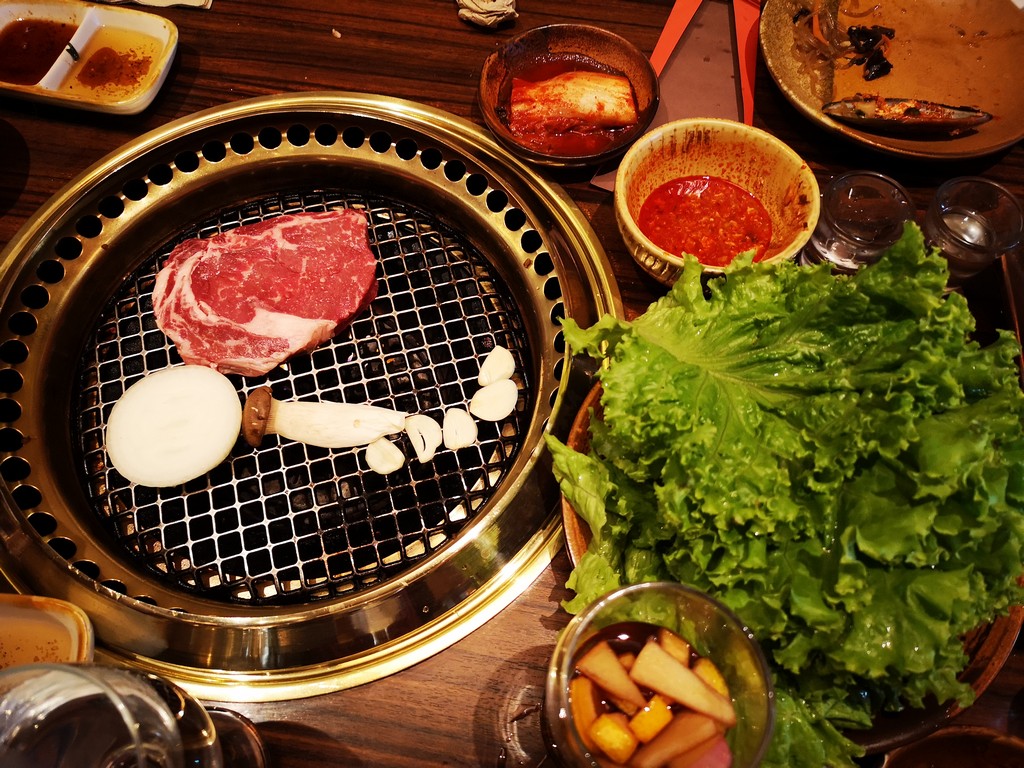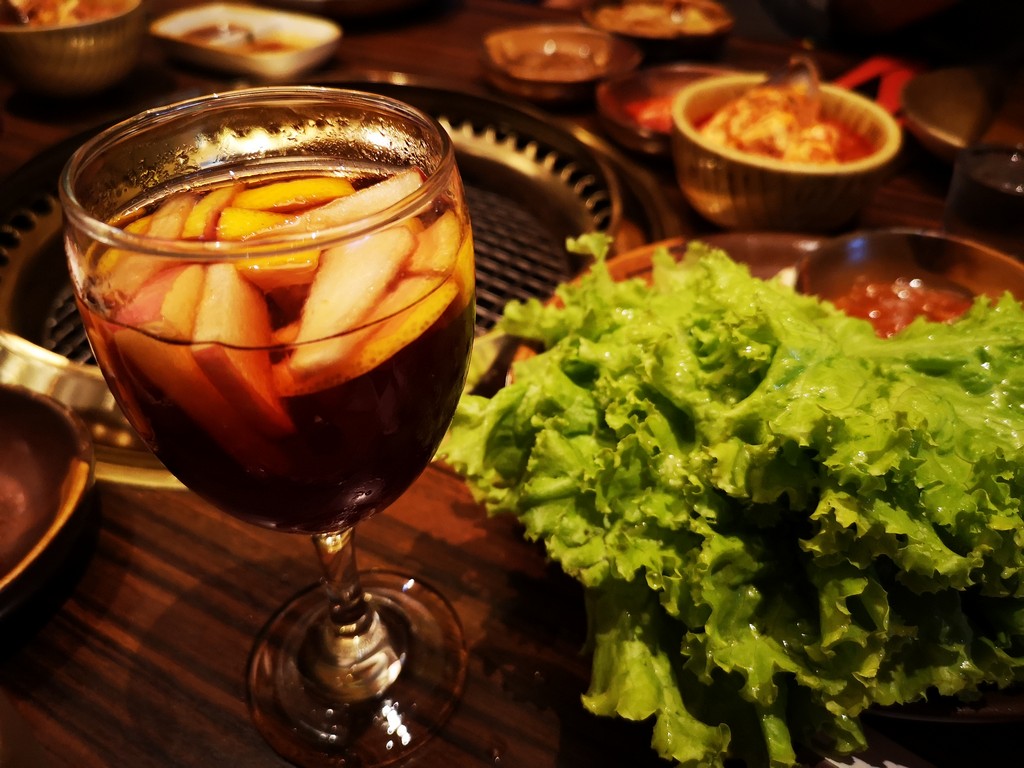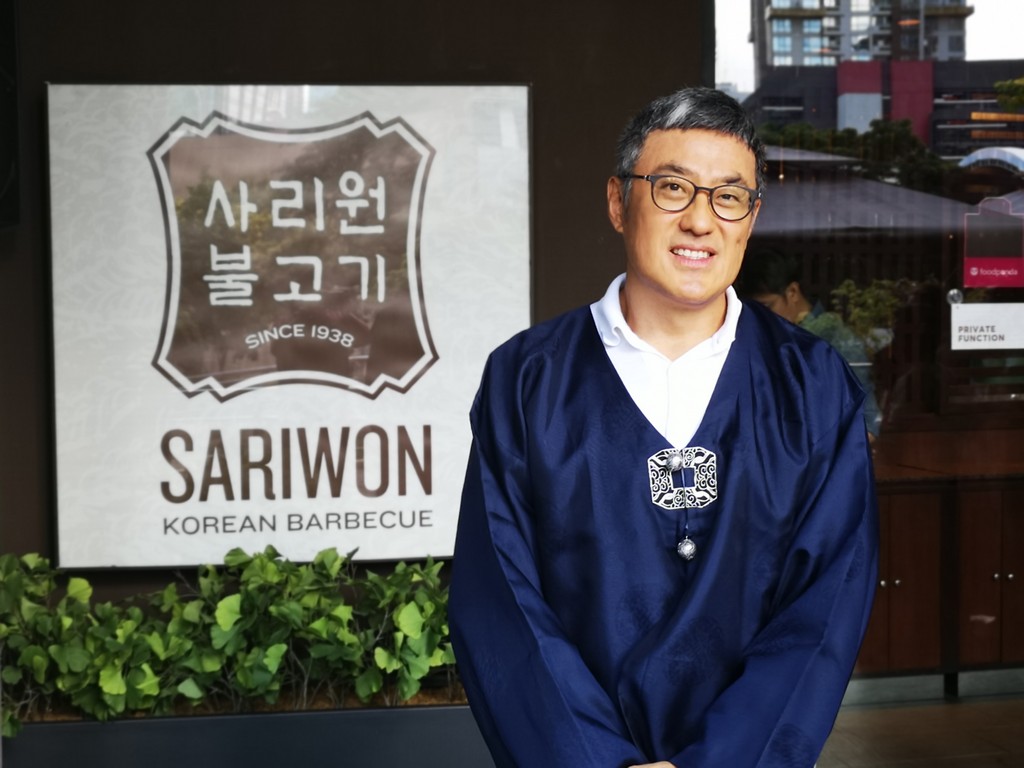BGC eats: How this high-end Korean import is responding to the samgyupsal craze | ABS-CBN
ADVERTISEMENT

Welcome, Kapamilya! We use cookies to improve your browsing experience. Continuing to use this site means you agree to our use of cookies. Tell me more!
BGC eats: How this high-end Korean import is responding to the samgyupsal craze
BGC eats: How this high-end Korean import is responding to the samgyupsal craze
Jeeves de Veyra
Published Jul 17, 2019 05:59 AM PHT
MANILA -- Before K-pop and Koreanovelas, and way before the samgyupsal craze, there were not that many restaurants in the metro that highlighted Korean food. Among these is Sariwon Korean Barbecue, which is now celebrating its seventh anniversary.
MANILA -- Before K-pop and Koreanovelas, and way before the samgyupsal craze, there were not that many restaurants in the metro that highlighted Korean food. Among these is Sariwon Korean Barbecue, which is now celebrating its seventh anniversary.
“My grandmother started in North Korea back in 1935. My grandfather suffered with diabetes. He was not supposed to have sweet things and sugar. So my grandmother, she started using vegetables and fruits to make a sweetness without adding sugar. So that's how we started Sariwon bulgogi,” explained Sung Yun Rah, the amicable Korea-based owner of Sariwon.
“My grandmother started in North Korea back in 1935. My grandfather suffered with diabetes. He was not supposed to have sweet things and sugar. So my grandmother, she started using vegetables and fruits to make a sweetness without adding sugar. So that's how we started Sariwon bulgogi,” explained Sung Yun Rah, the amicable Korea-based owner of Sariwon.
The brand gets its name from the North Korean city where Rah’s grandparents lived. Luckily for them, they were able to move to South Korea before the war. Shortly after, they opened Naksan Garden, a small 20-seat restaurant featuring their recipes. When they opened, they couldn’t be affiliated with North Korea because of division and discrimination. Only in the relaxed social and political climate of the 1990s did they change the name to Sariwon. Today, it has 10 restaurants in South Korea with a massive 350-seat flagship branch.
The brand gets its name from the North Korean city where Rah’s grandparents lived. Luckily for them, they were able to move to South Korea before the war. Shortly after, they opened Naksan Garden, a small 20-seat restaurant featuring their recipes. When they opened, they couldn’t be affiliated with North Korea because of division and discrimination. Only in the relaxed social and political climate of the 1990s did they change the name to Sariwon. Today, it has 10 restaurants in South Korea with a massive 350-seat flagship branch.
Happyfoods Corporation, the local partners of Sariwon, found out about the restaurant in an article in the New York Times. After doing their due diligence, they approached the family to ask for the master franchise. The Philippine branches are the first Sariwon franchised stores in the world. This is a big deal because Sariwon doesn’t even franchise in South Korea.
Happyfoods Corporation, the local partners of Sariwon, found out about the restaurant in an article in the New York Times. After doing their due diligence, they approached the family to ask for the master franchise. The Philippine branches are the first Sariwon franchised stores in the world. This is a big deal because Sariwon doesn’t even franchise in South Korea.
ADVERTISEMENT
The restaurant’s first branch at Bonifacio High Street Central in Taguig is refined in contrast to the chaos of the all-you-can-eat Korean grills popping up all over the place. Korean restaurants are notorious for guests smelling like food when they finish their meal. But in Sariwon’s case, the tables are specially built so the smoke and odors get sucked below into the floor. It makes the interiors cleaner as there are no pipes overhead.
The restaurant’s first branch at Bonifacio High Street Central in Taguig is refined in contrast to the chaos of the all-you-can-eat Korean grills popping up all over the place. Korean restaurants are notorious for guests smelling like food when they finish their meal. But in Sariwon’s case, the tables are specially built so the smoke and odors get sucked below into the floor. It makes the interiors cleaner as there are no pipes overhead.
This Korean concept clearly positions itself as higher-tier Korean restaurant specializing in Korean barbecue. While the beef takes center stage, the menu stays true to its roots with traditional favorites like the Soondobu Chigae, a fiery red stew filled with ground pork and seafood. The spiciness does well to complement the mussels and shrimps in the stew.
This Korean concept clearly positions itself as higher-tier Korean restaurant specializing in Korean barbecue. While the beef takes center stage, the menu stays true to its roots with traditional favorites like the Soondobu Chigae, a fiery red stew filled with ground pork and seafood. The spiciness does well to complement the mussels and shrimps in the stew.
Chapchae is another favorite starter and would be the friendliest dish to people who aren’t familiar with Korean food or are intimidated by its strong flavors. Best described as the Korean version of sotanghon, chapchae uses potato noodles that are a little thicker.
Chapchae is another favorite starter and would be the friendliest dish to people who aren’t familiar with Korean food or are intimidated by its strong flavors. Best described as the Korean version of sotanghon, chapchae uses potato noodles that are a little thicker.
Sariwon prides itself with using premiere cuts of beef in its premium dishes. The Yangnyeom Wagyu Salchisal resembles the dish people usually associate with Korean beef barbecue. Sariwon elevates the dish by using Wagyu chuck simply marinated in sea salt and spices.
Sariwon prides itself with using premiere cuts of beef in its premium dishes. The Yangnyeom Wagyu Salchisal resembles the dish people usually associate with Korean beef barbecue. Sariwon elevates the dish by using Wagyu chuck simply marinated in sea salt and spices.
The Yangneom Galbi, 24-hour aged beef short-ribs, put Sariwon on the map. According to the New York Times, Sariwon’s Yangneom Galbi was “the most tender and succulent in Seoul.” It’s a visual treat to see these “rolled out” to be cooked on the smokeless grill.
The Yangneom Galbi, 24-hour aged beef short-ribs, put Sariwon on the map. According to the New York Times, Sariwon’s Yangneom Galbi was “the most tender and succulent in Seoul.” It’s a visual treat to see these “rolled out” to be cooked on the smokeless grill.
ADVERTISEMENT
The Deung Shim Ribeye steak is also cooked on the smokeless grill. The ribeye is well marbled and takes well to being cooked on a smokeless grill. The cooked meat wrapped in lettuce with a dab of gochujang (Korean spicy paste) is a nice carb-free way of eating steak.
The Deung Shim Ribeye steak is also cooked on the smokeless grill. The ribeye is well marbled and takes well to being cooked on a smokeless grill. The cooked meat wrapped in lettuce with a dab of gochujang (Korean spicy paste) is a nice carb-free way of eating steak.
Then there’s the Sariwon Bulgogi. When it’s served, it’s immediately obvious that this is not the bulgogi found everywhere else. Sukiyaki-thin strips of sirloin are used instead of the chunkier cuts of beef used in other bulgogi versions. The pan is also different as it has a channel on the side for broth where vegetables and noodles are cooked. It takes but a moment to cook the meat. Then guests have the option of dipping the meat into the soup and sauce, or put the meat together in a small bowl of together with broth, vegetables, and noodles.
Then there’s the Sariwon Bulgogi. When it’s served, it’s immediately obvious that this is not the bulgogi found everywhere else. Sukiyaki-thin strips of sirloin are used instead of the chunkier cuts of beef used in other bulgogi versions. The pan is also different as it has a channel on the side for broth where vegetables and noodles are cooked. It takes but a moment to cook the meat. Then guests have the option of dipping the meat into the soup and sauce, or put the meat together in a small bowl of together with broth, vegetables, and noodles.
Cap off the meal with Sariwon’s soju sangria. The bar adds soju and brandy to the traditional sangria for added refreshment.
Cap off the meal with Sariwon’s soju sangria. The bar adds soju and brandy to the traditional sangria for added refreshment.
Sariwon has its place amid the increasing popularity of Korean restaurants in the country. Rah noted that a lot of the restaurants serve Korean food that’s been localized to cater to the Filipino pallet.
Sariwon has its place amid the increasing popularity of Korean restaurants in the country. Rah noted that a lot of the restaurants serve Korean food that’s been localized to cater to the Filipino pallet.
Rah and Happyfoods have opened two more Korean concepts to complement Sariwon’s high-end positioning. Soban K-Town Grill which specializes in pork and samgyupsal, now has eight branches around Manila. Their newest brand is Sibbyullee Flavors of Seoul that features eat-all-you-can Korean barbecue.
Rah and Happyfoods have opened two more Korean concepts to complement Sariwon’s high-end positioning. Soban K-Town Grill which specializes in pork and samgyupsal, now has eight branches around Manila. Their newest brand is Sibbyullee Flavors of Seoul that features eat-all-you-can Korean barbecue.
ADVERTISEMENT
“It's good that you have more Korean restaurants and that means that Korean food is welcomed by Filipinos. We want to emphasize in authenticity. Honest food and using real ingredients. Our goal is to keep that level,” said Rah.
“It's good that you have more Korean restaurants and that means that Korean food is welcomed by Filipinos. We want to emphasize in authenticity. Honest food and using real ingredients. Our goal is to keep that level,” said Rah.
ADVERTISEMENT
ADVERTISEMENT



